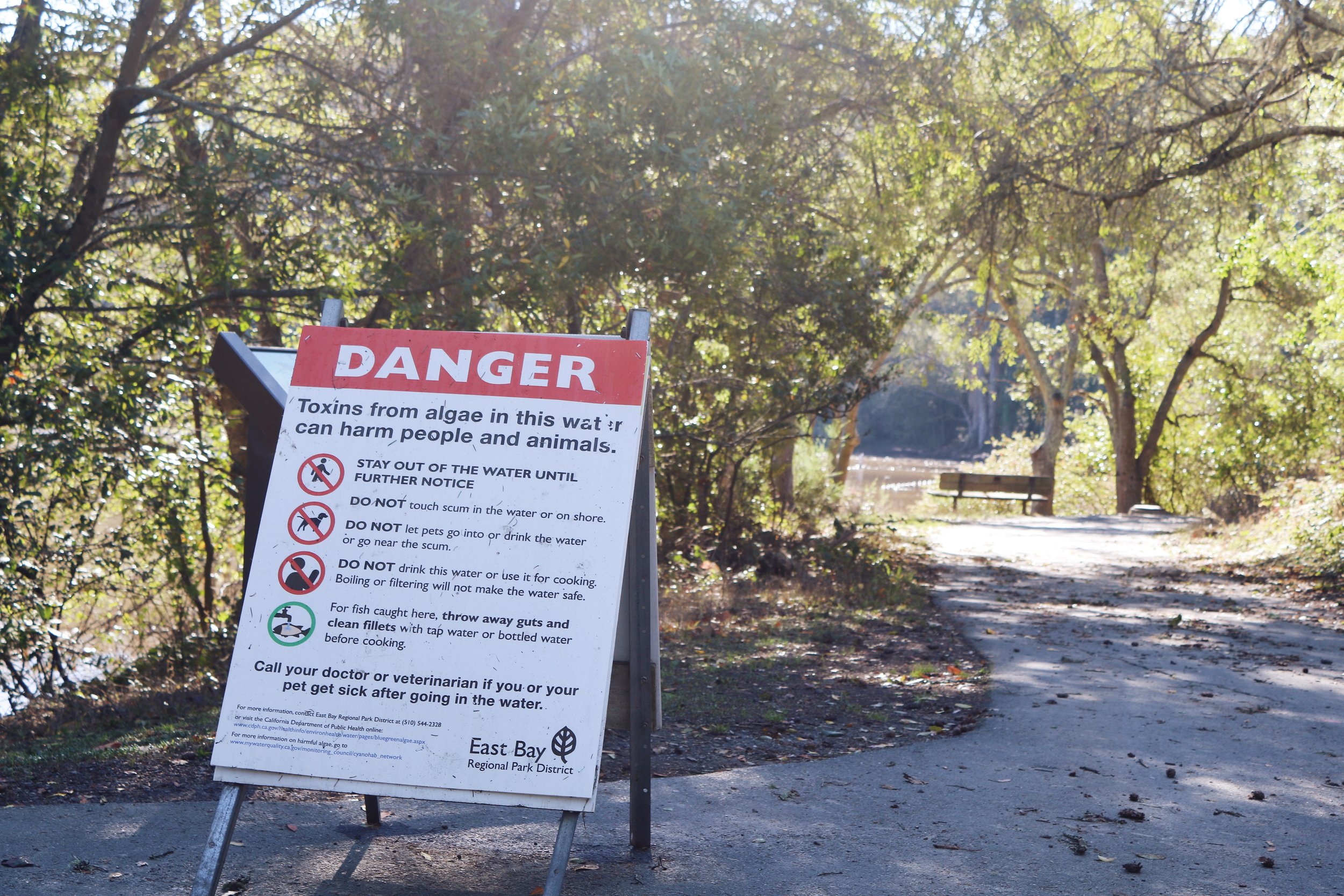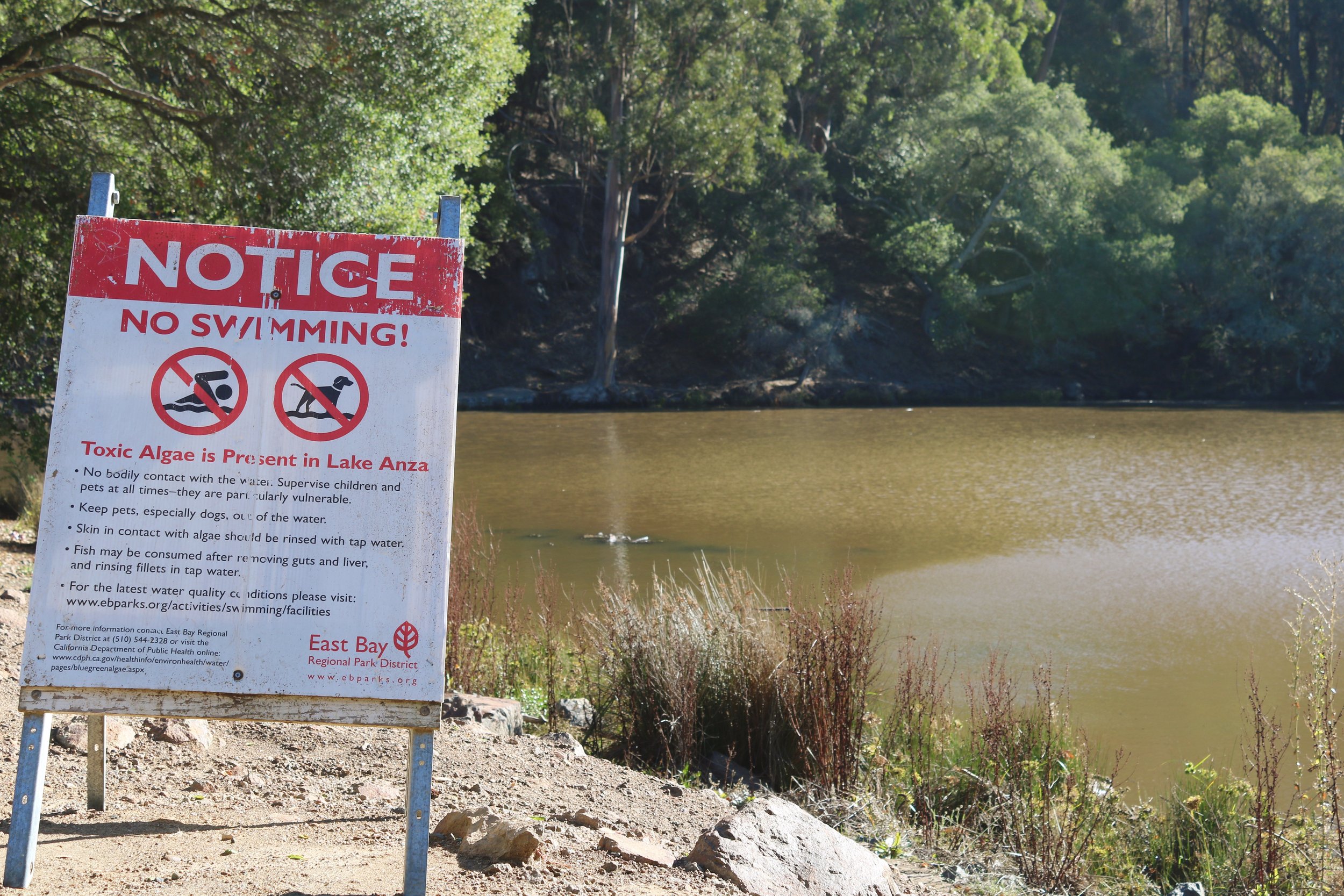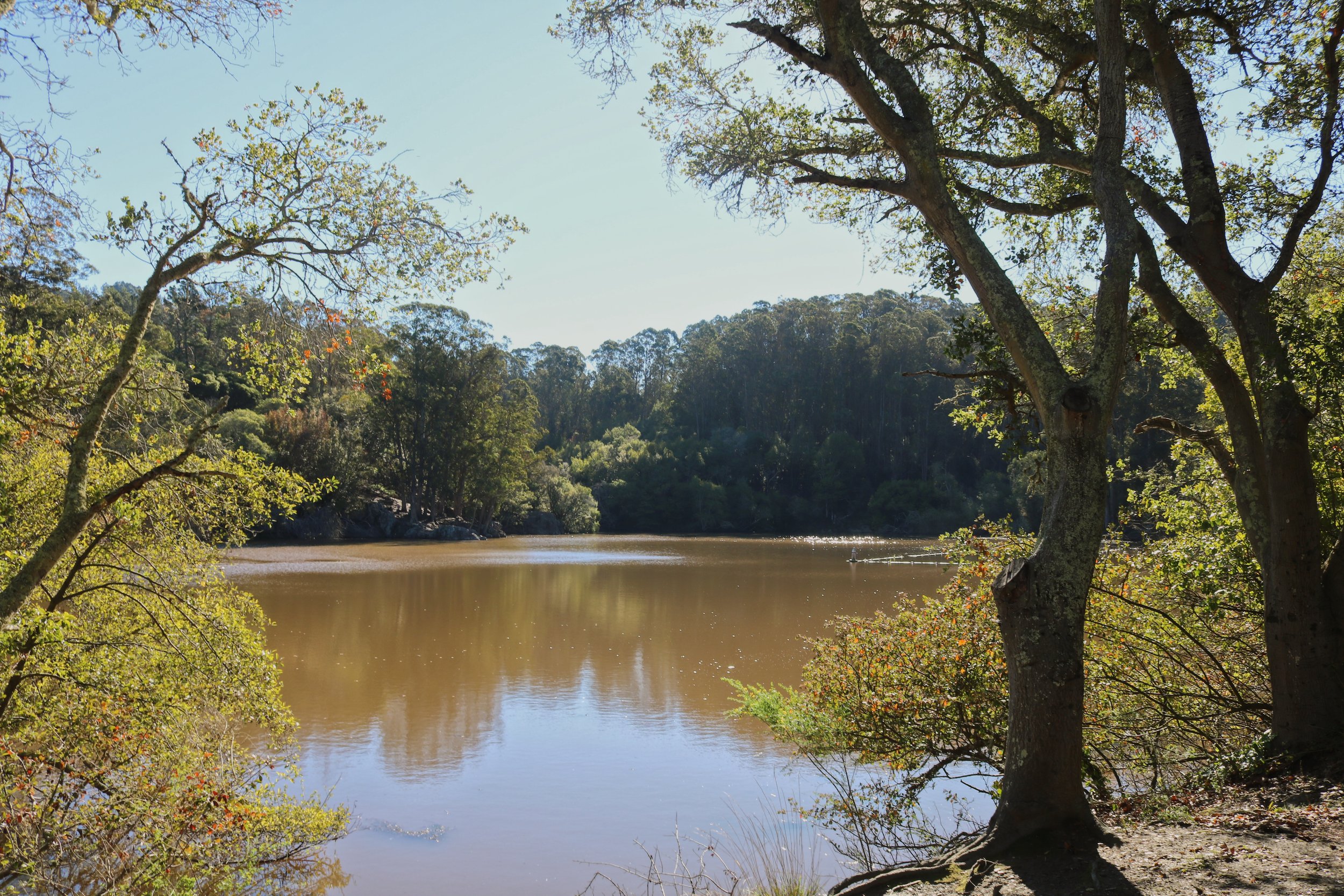Photos by Stella Moore
Within 15 minutes, one can move from a loud, chaotic city to a quiet, scenic lake nestled in the Berkeley Hills. Lake Anza is a natural, spring-fed lake with a sandy beach found in Tilden Regional Park. Surrounded by trees that provide shade and excellent climbing opportunities, Lake Anza has a lot to offer.
However, if you go to Lake Anza, you will come across a sign indicating that the beach is closed: no swimming, wading, or water contact is allowed due to a water quality hazard. The water quality hazard is caused by cyanobacteria (blue-green algae) in the lake.
Lake Anza was first shut down due to cyanobacteria in 2010. This was followed with more closures, in 2015, 2016, 2019, 2020, and currently, in 2021. Bacterial levels are tested weekly at Lake Anza from April to October.
What is cyanobacteria?
Cyanobacteria (also called blue-green algae) are single-celled organisms that live in fresh, brackish (combined salt and freshwater), and marine water. In certain conditions, such as an excess of nutrients, low water levels, or increased heat, cyanobacteria can become toxic. When algae overgrows, it is referred to as an “algal bloom.” An algal bloom can become a harmful algal bloom (HAB) when colonies of algae grow out of control and produce toxic or harmful effects. Blooms typically occur during late summer or early fall, but can occur anytime during the year.
The Harm in Harmful Algae Blooms:
When humans are exposed to toxic algae (through contact, ingestion, or inhalation) it can cause rashes, skin and eye irritation, allergic reactions, gastrointestinal problems or, at high doses, serious illness or death, according to the California Department of Public Health. This creates a serious public health concern. And, watch out for your favorite furry friend: dogs can also be harmed by ingesting or swimming in the water. Ecosystems are likewise in danger. Fish, birds, turtles, and other aquatic organisms are affected by cyanobacteria that alter and degrade the aquatic habitat. The blooms block the sunlight and steal oxygen, which other organisms need to live.
What to look for:
Whether at Lake Anza or another lake, be aware of cyanobacteria. You can look for common characteristics such as: bright green or blue green color, thick scum, musty, septic, or “rotten egg” odors.
Cyanobacterial blooms are usually blue-green in color, but algal blooms can vary in color, ranging all the way to red or brown. Cyanobacteria can also cause reduced transparency (i.e., water that looks like pea soup or lets limited light through).
What to do:
When you come across blue-green algae, avoid contact with the water. Do not let children or pets swim in or drink the water. If you do come in contact with cyanobacteria, rinse off as thoroughly as possible and speak with a healthcare professional.
National Level management:
Unfortunately, cyanobacteria is common: at least 36 U.S. states have anecdotal reports of human or animal poisonings associated with cyanotoxins.
The US EPA is trying to figure out how to handle cyanobacteria, according to this report, EPA Needs an Agencywide Strategic Action Plan to Address Harmful Algal Blooms, which states, “The EPA does not have an agency-wide strategy for addressing harmful algal blooms.” With occurrences becoming more and more common, the EPA needs to develop a national program to deal with these blooms. A good start might be creating a system to forecast and monitor blooms, and to develop criteria to determine when water is a hazard to drink due to cyanobacteria. However, some agricultural watersheds stretch across multiple states, which would require an interstate regulatory response. Regulations such as preventing farmers from applying fertilizer to saturated ground would help reduce the nutrient-runoff that can cause the blooms. Hopefully state governments and the federal government can work together to implement an effective and efficient response to this growing problem-- and fast.
Climate change contributes to algae growth: erratic weather patterns (intense storms, extreme rainfall) sends nutrient runoff into water bodies and helps to feed cyanobacteria growth. With the temperature increasing, warmer water creates the perfect environment for algae growth.
Regardless of the algae, Lake Anza is still a beautiful lake to enjoy. If you are careful to avoid the water, you can still reap other benefits from your visit.




